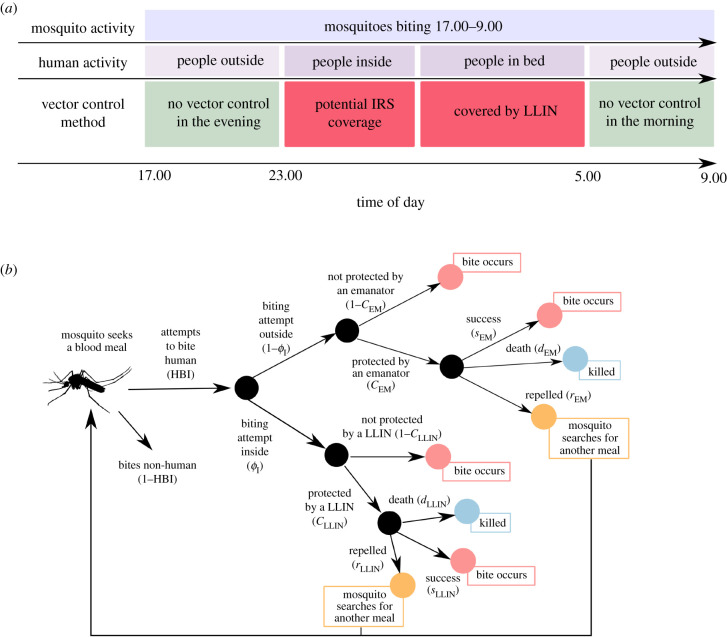Figure 1.
(a) Graphical representation of the how LLIN use leaves periods in the morning and evening when mosquitoes are still biting. (b) Flowchart of how outdoor biting and emanator use are incorporated into the malaria transmission model structure. Mosquitoes bite indoors or outdoors with a probability depending on the overall proportion of biting attempts that take place indoors (ϕI). The outcome of the feeding attempt depends on the proportion of the population protected by a bednet (CLLIN) or an emanator (CEM). If there is no intervention, then the mosquito will go on to feed on the host. If there is an intervention present then the outcomes depend on what the intervention is. For emanators, the mosquito can be repelled (exit the area without blood-feeding, rEM), be killed (dEM) or successfully bite (sEM). For LLINs, the mosquito can be repelled (rLLIN), be killed (dLLIN) or successfully bite (sLLIN). Mosquitoes that are repelled go back to the start of the flowchart and can bite outdoors or indoors again with the same probabilities.

